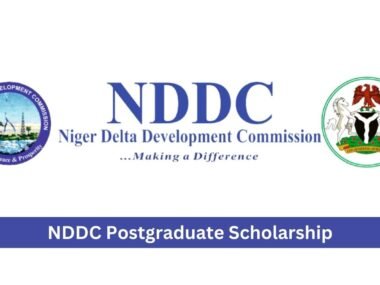Securing academic scholarships can be a game-changer, transforming the dream of higher education into an affordable reality. These awards, granted for academic excellence, leadership, or specialized talents, provide financial support without the burden of repayment, easing the stress of college costs. With billions of dollars available annually—Scholarships.com reports over $19 billion in opportunities—navigating the scholarship landscape can feel overwhelming. Yet, with the right strategies, you can stand out in a competitive pool and secure funding for your education. This comprehensive guide dives deep into the process, offering detailed strategies, practical examples, and a sample essay to help you win academic scholarships. Whether you’re a high school student or a college applicant, these insights will empower you to showcase your potential and achieve your goals.
The Importance of Academic Scholarships
Academic scholarships reward students for their achievements in academics, leadership, or specific fields like STEM, humanities, or the arts. Unlike loans, these funds don’t require repayment, making them a vital resource for reducing college debt. Beyond financial relief, scholarships validate your hard work, boost your résumé, and open doors to networking opportunities with sponsors or institutions. According to BigFuture, scholarships also increase access for underrepresented or low-income students, leveling the playing field. Winning an academic scholarship requires more than good grades—it demands strategic preparation, compelling storytelling, and alignment with the scholarship’s mission. By mastering these elements, you can position yourself as the ideal candidate.
Strategies for Winning Academic Scholarships
To secure academic scholarships, you need a deliberate approach that combines research, preparation, and persistence. Below, we explore ten key strategies, each explained in depth to clarify why it’s effective, how to implement it, and what makes it impactful, ensuring a narrative flow rather than a simple list.
1. Begin Your Search Early to Maximize Opportunities
Time is your greatest asset when applying for scholarships. Starting early—ideally in your sophomore or junior year of high school—gives you access to more opportunities, including scholarships open to younger students. Early action allows you to research thoroughly, refine application materials, and apply to multiple awards, increasing your chances of success. BigFuture’s program, for example, enters students into monthly drawings for $500 or $40,000 by completing steps like building a college list, starting as early as 9th grade. Missing early deadlines can limit your options, as many scholarships close before senior year.
To implement this, create accounts on platforms like Scholarships.com or Fastweb, which offer personalized scholarship matches based on your academic profile, interests, and intended major. Complete your profile with details like your 3.9 GPA or extracurriculars, such as debate club leadership, to receive tailored recommendations. Set aside 1–2 hours weekly to browse new opportunities, using a calendar or app to track deadlines. For example, a student who started searching in 10th grade might discover a local $1,000 scholarship from a community foundation, giving them time to prepare a standout application. Early preparation also reduces stress, allowing you to focus on quality over quantity.
2. Target Scholarships That Match Your Profile
With thousands of scholarships available, focus on those that align with your strengths, goals, or background to maximize your chances. Scholarships.com hosts over 3.7 million awards, ranging from merit-based to field-specific or need-based. Use filters to narrow options by GPA, major, or location, and prioritize local scholarships, which BigFuture notes are less competitive. For instance, a 4.0 student interested in engineering might target the Siemens Competition for STEM excellence, while a first-generation student could apply for need-based awards.
Research the scholarship provider’s mission to ensure alignment. If applying for the QS ImpACT Academic Excellence Scholarship, as mentioned by Top Universities, highlight your academic rigor and commitment to social impact, such as leading a community recycling initiative. Contact your school’s financial aid office or counselor for local opportunities, like a $500 award from a rotary club. Check eligibility carefully—some scholarships require specific test scores or residency—and avoid wasting time on those you don’t qualify for. Tailoring your efforts ensures your applications are both efficient and impactful.
3. Strengthen Your Academic and Extracurricular Profile
Academic scholarships prioritize high achievement, so aim for a strong GPA (ideally 3.5 or higher), rigorous coursework (e.g., AP or IB classes), and competitive test scores, as emphasized by Top Universities’ full scholarship guide. However, grades alone won’t suffice. Extracurriculars—such as student government, volunteer work, or athletic achievements—demonstrate leadership and well-roundedness, qualities scholarship committees value. For example, a student who maintained a 4.1 GPA while captaining the soccer team and volunteering 100 hours at a food bank showcases both academic and personal excellence.
Build a portfolio to document your achievements, including awards, certificates, or projects. If pursuing a biology scholarship, highlight a science fair project that won first place at a regional competition. Engage in activities that align with your intended major, such as coding workshops for a computer science scholarship. Balance your commitments to avoid burnout, taking breaks to maintain focus, as Top Universities advises. A strong profile not only bolsters your applications but also prepares you for interviews, where you’ll discuss your accomplishments with confidence.
4. Write a Compelling Personal Statement
Your personal statement is the heart of your application, offering a chance to tell your story and explain why you’re the ideal candidate. Scholarships.com stresses avoiding generic claims like “I’m dedicated.” Instead, use specific examples to illustrate your qualities. For example, rather than saying, “I’m a leader,” describe how you organized a school-wide fundraiser that raised $3,000 for disaster relief, detailing the challenges you overcame, like coordinating volunteers under tight deadlines. This specificity makes your essay memorable and credible.
Craft your essay with a clear structure: an engaging introduction, body paragraphs highlighting achievements and goals, and a conclusion expressing gratitude. Start with a hook, such as, “When my family lost our home to a fire, I discovered the power of education to rebuild lives.” Connect your story to the scholarship’s mission—e.g., for a STEM scholarship, emphasize how your robotics project aligns with innovation goals. Adhere to word limits (typically 250–500 words), and seek feedback from teachers or peers to refine clarity and impact, as Top Universities suggests. A well-crafted essay creates an emotional connection, setting you apart from other applicants.
5. Secure Impactful Letters of Recommendation
Strong recommendation letters provide a third-party perspective on your abilities, adding credibility to your application. Top Universities emphasizes choosing recommenders who know you well, such as a teacher who supervised your research project or a coach who witnessed your leadership. A math teacher who can describe how you tutored struggling peers, improving their grades, offers a more compelling letter than a generic endorsement from a distant acquaintance.
Meet with recommenders early, at least six weeks before deadlines, and provide a résumé or summary of your achievements and the scholarship’s focus. For example, if applying for a leadership scholarship, share details about your role as debate team captain. This helps them write personalized, detailed letters. Follow up politely a week before the deadline to ensure submission, and send a thank-you note to maintain strong relationships for future applications. A thoughtful letter can make a significant difference in competitive scholarship pools.
6. Stay Organized to Manage Multiple Applications
Applying for scholarships is a numbers game— the more you apply for, the better your chances. However, managing multiple applications requires organization. BigFuture recommends creating a spreadsheet to track scholarship names, deadlines, requirements (e.g., essays, transcripts), and submission statuses. Prioritize high-value or highly relevant scholarships, but don’t overlook smaller awards, like a $500 local grant, which have less competition.
Use tools like Google Calendar to set reminders for deadlines, and gather materials like transcripts or financial aid forms early. Reuse essays when possible, adapting them to fit specific prompts. For instance, a 500-word essay about your academic journey can be tailored for multiple merit-based scholarships with minor tweaks. Double-check guidelines to avoid errors, such as missing a required letter of recommendation, which Top Universities notes can disqualify you. Staying organized ensures you submit polished, complete applications on time.
7. Prepare Thoroughly for Scholarship Interviews
Many competitive scholarships, especially full scholarships, require interviews, as noted by Top Universities. These may be in-person, virtual, or part of a “scholarship weekend” hosted by universities. Treat interviews as a chance to expand on your application, discussing your goals, achievements, and alignment with the scholarship’s mission. For example, if applying for a humanities scholarship, prepare to explain how your history research project reflects your passion for social studies.
Practice common questions, such as “Why do you deserve this scholarship?” or “How will you use this opportunity?” For instance, you might say, “This scholarship will fund my biology degree, enabling me to research sustainable agriculture solutions.” Conduct mock interviews with a mentor or friend to build confidence, and research the scholarship provider to ask informed questions, like “What research opportunities does your institution offer for STEM scholars?” Dress professionally, arrive early, and follow up with a thank-you email to leave a positive impression.
8. Avoid Scholarship Scams to Protect Your Time and Money
Scholarship scams can derail your efforts, so vigilance is essential. BigFuture warns against services charging fees for “guaranteed” scholarships, as legitimate awards are free to apply for. Avoid sharing sensitive information like your Social Security number unless you’ve verified the scholarship’s legitimacy through its official website. Use trusted platforms like Scholarships.com or Fastweb, which vet opportunities, and cross-check details on the sponsor’s site. If a scholarship promises large awards with minimal effort, it’s likely a scam. Staying cautious ensures you invest time in genuine opportunities.
9. Leverage Scholarship Platforms for Personalized Matches
Online platforms streamline your search by matching you with scholarships based on your profile. Scholarships.com and Bold.org allow you to filter by GPA, major, or demographics, while BigFuture offers step-based awards for actions like completing the FAFSA. Create detailed profiles, including your 3.8 GPA, intended nursing major, or volunteer experience, to receive relevant matches. For example, a student interested in journalism might find a $2,000 award through Bold.org’s platform. Regularly update your profile and check for new listings to stay ahead of deadlines.
10. Seek Feedback to Refine Your Applications
Feedback from mentors, teachers, or peers can elevate your application materials. Top Universities suggests having a trusted adult review your essays for clarity, grammar, and impact. For instance, a teacher might suggest rephrasing a vague claim like “I’m passionate” to “My passion for environmental science led me to organize a community clean-up, reducing local litter by 20%.” Share your essay drafts early, and ask specific questions, like “Does my introduction engage the reader?” Incorporate feedback thoughtfully, and proofread multiple times to ensure a polished final product.
What Is a Scholarship and Why Does It Matter?
A scholarship is a financial award given to students to help cover education-related expenses. Unlike student loans, scholarships don’t need to be repaid, making them a golden ticket for students who want to avoid debt.
How to Get a Scholarship to Study (Step-by-Step)
Step 1: Research Scholarships That Match Your Profile
Before you apply, know what’s out there. Start with reputable scholarship platforms like:
Scholarships.com, Bold.org, Chegg Scholarships, Your school’s financial aid office
Use filters to find opportunities by country, field of study, GPA, and background. Bookmark those that feel like a strong fit.
Step 2: Understand the Eligibility Criteria
Each scholarship has its own requirements. Some want a high GPA, while others care more about leadership or community service. Check for:
- Age or level of study (e.g., undergraduate, postgraduate)
- Nationality or residency status
- Specific test scores (e.g., SAT, TOEFL, IELTS)
- Financial need or hardship documentation
Reading the fine print ensures you don’t waste time on ones you’re not qualified for.
Step 3: Prepare Strong Application Documents
This is where you make your case. Most scholarships ask for:
- A compelling personal essay or statement of purpose
- Letters of recommendation from teachers, mentors, or employers
- Academic transcripts and certificates
- Proof of extracurricular activities or community involvement
Your essay should reflect who you are, what drives you, and why you deserve the scholarship.
Step 4: Apply Early and Apply Often
Scholarship deadlines sneak up quickly. Create a calendar with deadlines and application statuses.
Don’t just apply for one. Apply to as many as possible, even the smaller ones—they can add up! And remember: early applications stand out.
How to Get 100% Scholarship — Is It Possible?
Yes, 100% scholarships—or full-ride scholarships—are real, and thousands of students receive them every year. These scholarships cover all education-related expenses, including:
Tuition, Accommodation, Books and materials, Travel and sometimes even a living stipend
What Makes You Eligible for a Full Scholarship?
While every scholarship is unique, most full-ride programs look for:
- Outstanding academic performance (top grades, high test scores)
- Exceptional leadership or service
- Clear future goals aligned with their mission
- A powerful personal story or circumstances of need
The key is to show both merit and potential impact.
Examples of 100% Scholarships Worldwide
- Fulbright Scholarship (USA) – for international students to pursue graduate study
- Chevening Scholarship (UK) – for global leaders in postgraduate programs
- DAAD Scholarships (Germany) – for master’s and doctoral students
- Gates Cambridge (UK) – for exceptional international postgraduate students
- Mastercard Foundation Scholarship – full scholarships for African students at partner universities
These programs are highly competitive but fully worth the effort.
Tips to Win a Full Scholarship
Start early – Many top scholarships open 9–12 months before programs begin
Write with purpose – Your essay should show depth, not just achievements
Quantify success – Use metrics: “Raised $2,000 for clean water,” “Ranked top 5% in my state”
Get feedback – Ask teachers or mentors to review your application
Stay authentic – Avoid exaggerations; be honest and passionate
Country-Specific Tips for Studying Abroad
If you’re looking to study overseas, most countries offer specific scholarship paths:
USA
Look for university-specific full rides (Harvard, Yale, Stanford)
Explore external funds like the Fulbright and Gates Millennium
UK
Chevening, Commonwealth, and Rhodes Scholarships
Many UK universities offer international student grants
Germany
DAAD offers generous, government-backed scholarships
Tuition is already low or free at public universities
Canada & Australia
Look for Commonwealth, Lester B. Pearson (Canada), or Australia Awards
Apply early due to high international student demand
UAE & Asia
UAE’s Khalifa University and South Korea’s GKS are rising full-fund options
Common Mistakes to Avoid
- Using one essay for every application – Tailor each one to match the scholarship’s mission
- Missing the deadline – Set reminders and submit early
- Ignoring small/local scholarships – These often have less competition
- Failing to proofread – A sloppy application can cost you the award
Sample “Why I Deserve This Scholarship” Paragraph
“Coming from a rural village where few girls graduate high school, I’ve overcome barriers that have shaped me into a determined and compassionate learner. My dream is to become a healthcare advocate for underserved communities. Receiving this scholarship would not only fund my education but amplify my ability to give back.”
This style works because it’s honest, purposeful, and mission-aligned.
FAQs – Quick Answers
Q: Can I get a scholarship without perfect grades?
Yes! Many scholarships consider financial need, leadership, or unique talents.
Q: Can I apply for multiple scholarships at once?
Absolutely. In fact, it’s encouraged.
Q: Do I need to repay a scholarship?
No, scholarships are financial gifts.
Q: How early should I apply?
Start at least 6–12 months before your intended start date.
Conclusion
Winning academic scholarships requires dedication, but the rewards—financial freedom, recognition, and opportunity—are transformative. Begin today by creating profiles on trusted platforms like BigFuture, Scholarships.com, or Bold.org to discover scholarships tailored to your strengths. Your journey is unique—use these strategies to show the world why you’re the perfect candidate for academic scholarships.







